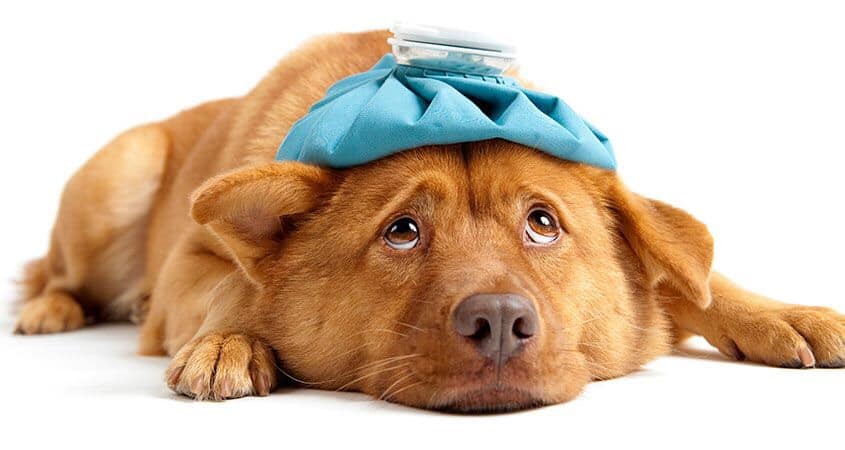A checklist for your dog’s first aid kit

All good dog parents want to keep their pups safe, and that means being prepared for potential doggie disasters. One of the best ways to be ready is to create a first aid kit for your four-legged friend.
But what exactly do dogs need in a first aid kit? Some of the items are probably obvious, but others may be a bit more surprising. That’s why we decided to put together this comprehensive list of lesser known items you should include, as well as why.
Wound spray
There are all kinds of ways that your dog can get cut, scratched, or otherwise suffer injury to their skin, both around the house and outdoors.
Self-cling bandage
If your dog suffers a serious laceration or other injury, you’re probably going to want to cover it with a bandage after using the wound spray. Look for self-cling bandages that won’t stick to your dog’s fur to avoid painful removal later.
Bandage scissors
Unless you want Fido looking like a mummy when you bandage him, include a pair of bandage scissors in your kit that are designed to cut through gauze, clothing, and (yes) bandages.
Eye wash and ear wash
If your dog gets some kind of pollutant or other contaminant in her eyes or ears, it can cause itching, stinging, burning, or worse. Dog-safe eye wash and ear wash can help you flush out the problem materials with a dropper nozzle and can even be used on any dressing needed.
Dog cone
The problem with eye and other head-related issues is that your pup is going to do whatever he can to scratch and rub at the area with his paw. Prevent this from happening by using a dog cone, which will also prevent your dog from being able to chew at stitches from surgery or lick at a hot spot during treatment. Your vet may also refer to this as an Elizabeth Collar, or e-collar for short.
Fight or flight response may kick in for even the most friendly of pets. So protect yourself well you help them.
Muzzle
Even a normally calm and balanced dog may lash out when injured, and he may also bite at a wound, making it worse. Muzzles, serve the dual purpose of keeping a nervous or aggressive dog from harming others or bringing harm to himself.
Use the cone if getting a muzzle on is too difficult.
Leash
The leash is an important tool to have on-hand because it’s a way to gain control of your dog at a time that she might be panicking and try to run away. You want to be able to focus on the injury, not just keeping your dog from fleeing.
Hydrogen peroxide
If your dog consumes poison, you might not have time to get them to the vet. Depending on the poison, making your dog vomit can be an important tactic until you can get them to treatment. One safe and effective way to induce vomiting and get the poison out of their system is to force them to drink hydrogen peroxide. Always keep a fresh bottle on hand.
But don’t assume that hydrogen peroxide is the answer in every situation. It could do more harm than good, depending on the poison consumed. Your best bet is to call your vet to get their recommendation on how to handle the situation right well on rout to see them.
Activated charcoal
Activated charcoal is used orally to prevent the absorption of various toxins (e.g., insecticides, aspirin overdose) from the stomach and intestine. It must be given soon after the ingestion of the toxin/poison. It is not an antidote, and other supportive care and medications may be needed for the treatment of the poisoning. Like peroxide only give under advice of a vet or poison control.
Important phone numbers
You want to be able to reach help fast in an emergency situation. Include the phone number for a 24 hour emergency veterinarian, vet clinic or pet services, and the SPCA poison control center.
Medical records
If you have to take your dog to seek help from someone other than his regular veterinarian, it can be valuable to provide them with his medical background as well as proof of his rabies vaccine.
With these items, you’ll be prepared to help your dog through most dangerous situations that they’re likely to come across, but remember, it’s always best to seek veterinary care. A first aid kit should just be used to remediate an emergency until you can get to the vet or to address very minor injuries like a superficial wound.
A pet first aid class like the ISCC pet first aid certification course for pet professionals. Is always recommended. Although this course is oriented to pet professionals, it is very informative to owners also. Please check with us on when our next class will be held.

